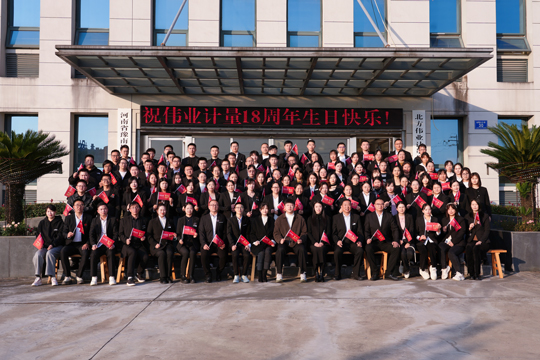Pesticideresidues is a general term for trace pesticides, toxic metabolites, degradation products and impurities that remain in organisms, harvests, soil, water, and atmosphere without being decomposed within a period of time after pesticide use.
Some of the pesticides applied to crops are attached to the crops, and other scattered in the environment, such as soil, atmosphere and water. Some of the pesticides remaining in the environment will be absorbed by plants. Residual pesticides reach people and animals directly through plant fruits or water and the atmosphere, or are finally passed on to humans and animals through the environment and food chain. The pesticide residue stripper can degrade pesticide residues on the surface of fruits and vegetables.
1. Spectroscopy
Under specific conditions, organophosphorus pesticides undergo chemical reactions such as oxidation, sulfonation, esterification, and complexation with special color-developing agents, which are then qualitatively or quantitatively determined according to the color of the wavelength.
2. Chromatography
(1)Thin-layer chromatography (TLC)
Thin-layer chromatography is a widely used method for rapid detection of trace amounts. In pesticide residue determination technology, it is not only an important separation method, but also a qualitative and quantitative analysis method.
In the detection process, the organophosphorus pesticides are generally extracted with a suitable solvent, and after purification and concentration, they are separated and developed on a thin-layer silica gel plate.
(2)Gas Chromatography (GC)
The extracted, purified and concentrated organophosphorus pesticides are injected into the gas chromatographic column; after the programmed temperature rise and vaporization, different organophosphorus pesticides are separated in the solid phase, and the gas chromatograms are drawn through the detection and scanning of different detectors. Quantitative by comparing the peak or peak area with the standard curve. It can measure multiple components at the same time, which is simple and quick, with high sensitivity and accuracy. The optimal setting of chromatographic conditions is the key to gas chromatography technology.
(3)High Performance Liquid Chromatography (HPLC)
High performance liquid chromatography is a chromatographic analysis method developed on the basis of liquid chromatography column chromatography, introducing the theory of gas chromatography and improving it. High-performance liquid chromatography is more and more widely used in pesticide residue analysis, because high-performance liquid chromatography can be suitable for the analysis of high boiling point and less easily vaporized, thermally unstable and highly polar pesticides and their metabolites; The combination of pre-column extraction, purification and post-column fluorescence derivatization reaction and mass spectrometry is easy to realize automatic analysis; at the same time, the advent of some new detectors has improved the detection sensitivity of high performance liquid chromatography to a certain extent. Compared with gas chromatography, it not only has good separation efficiency, high sensitivity, fast detection speed, but also has a wide range of applications.
3. Chromatography-Mass Spectrometry
Chromatography-mass spectrometry technology not only exerts the high separation ability of chromatography, but also exerts the high identification ability of mass spectrometry, and can carry out qualitative and quantitative analysis of multiple residues in the presence of multiple residues, especially suitable for multi-residue analysis. . GC-MS is a relatively mature and widely used chromatographic mass spectrometry technology. It not only has the high separation performance of gas chromatography, but also has the characteristics of accurate identification of compound structures by mass spectrometry. It can achieve the purpose of simultaneous qualitative and quantitative detection, and is mostly used in pesticides. Detection of metabolites, degradants and multi-residue detection.
4. Capillary electrophoresis
In the past, pesticides were mostly determined by HPIE and GC, but recently they can be separated and determined by CE. The separation modes are mainly CZE and capillary micellar electrokinetic chromatography (MEKC). Capillary electrophoresis has been used for the determination of pesticide residues in foods such as milk, beer, cereals, fruits, vegetables and pork
5. Immunoassay technology
Immunoassay technology is used in radioimmunoassay and enzyme immunoassay. Currently, the application of enzyme immunoassay technology, especially enzyme-linked immunoassay in pesticide residue detection, is very active in foreign countries, and its application is becoming more and more common.
ELISA is a detection method based on the specific and reversible binding reaction of antigen and antibody. The detection level can reach ng or even pg level. ELISA is widely used in the analysis and detection of pesticide residues in food such as organophosphorus pesticides, organochlorine pesticides, herbicides, carbamate pesticides, veterinary drug residues (such as chloramphenicol), mycotoxins, etc. As a rapid screening method, EKSIA often suffers from false positives when analyzing complex matrix samples due to matrix interference and cross-linking reactions. Therefore additional analytical methods are required if quantification and confirmation of the sample is required.
6. Enzyme Inhibition
The enzyme inhibition method is a technique for rapid residue detection of some pesticides. Acetylcholinesterase is the most widely used method for the determination of pesticide residues. Acetylcholinesterase is more sensitive to organophosphorus pesticides and has high sensitivity and is expensive. Some pesticides are acetylcholinesterase The inhibition of esterase is not obvious, and additional oxidation aids or pretreatment are required to improve the sensitivity of pesticide detection. So it was studied to replace acetylcholinesterase with butyrylcholinesterase and animal and plant esterase. By screening a large number of plants, Yu Jicheng et al. initially obtained a plant enzyme source with high activity, and used the enzyme inhibition method to quickly detect the residues of organophosphorus pesticides such as trichlorfon and parathion in vegetables.
7. Biological sensor
Biosensor with membrane and pH electrode assembly using immobilized AChE.
Organophosphorus and carbamate pesticide residues can be determined. At present, the development and application of biosensor method is a research hotspot in pesticide residue detection technology, and great progress has been made in the aspects of diversification of determination methods, improvement of measurement sensitivity, shortening of response time, improvement of instrument automation, and ability to adapt to on-site detection.
The biological substances used in biosensors are mainly enzymes, whole cells, organelles, receptors or antibodies. Correspondingly, there are enzyme sensors, whole-cell sensors, and immunosensors. The application of immunosensors can greatly improve the detection sensitivity and greatly shorten the detection time. The optical fiber sensor, the product of the combination of biosensors and optical fiber technology, has broad application prospects in rapid detection and online detection.
8. Live detection
Bioassay is a technique for performing bioassays using living organisms.
For example, the effect of pesticides and bacteria can affect the luminous intensity of bacteria, Pesticide residues were detected by bacterial luminescence intensity.
However, this method only responds to a few pesticides, cannot identify the types of residues, and has low accuracy. The sensitive housefly detection method is to feed the samples to houseflies, and determine the pesticide residues according to the mortality of houseflies.
The technical method is direct, simple and easy to operate, users can detect by themselves without complicated instruments. But the detection time is too long, qualitative roughness is low in accuracy. It is only effective for a few pesticides. People and animals may be different, thus affecting the judgment of pesticide residues.

 info@weiyel.com
info@weiyel.com
 - English
- English
 - Русский язык
- Русский язык


